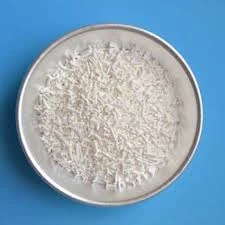
aluminum hydroxide to aluminum
The Transformation of Aluminum Hydroxide to Aluminum
Aluminum, one of the most abundant elements on Earth, is widely used in various applications, from construction materials to packaging. But before it can be employed in these industries, aluminum must be extracted and refined. One of the key stages in this process involves the transformation of aluminum hydroxide into metallic aluminum. This conversion illustrates not only the fascinating aspect of chemical transformations but also highlights the important industrial processes behind aluminum production.
The Transformation of Aluminum Hydroxide to Aluminum
The aluminum hydroxide produced in this manner is not the final product; it must undergo further processing to yield pure aluminum. The transition from aluminum hydroxide to metallic aluminum is achieved through a process known as reduction. This is primarily carried out through the Hall-Héroult process, a critical method in the aluminum industry. In this electrochemical process, aluminum hydroxide is first converted into aluminum oxide through calcination, which involves heating the compound to remove water molecules.
aluminum hydroxide to aluminum

Once we have aluminum oxide, the next step is the electrolytic reduction. The aluminum oxide is dissolved in molten cryolite (Na3AlF6), creating a suitable medium for electrolysis. Inside an electrolytic cell, direct current is passed through the molten mixture. This current facilitates the reduction of aluminum ions at the cathode, where they gain electrons to form molten aluminum. Concurrently, oxygen is released at the anode, which reacts with the carbon anode material, resulting in carbon dioxide.
The metallic aluminum sinks to the bottom of the cell and can be tapped off, while the by-product gases are managed to minimize environmental impact. The result is pure, metallic aluminum ready for a variety of applications.
Through these fascinating chemical processes—from aluminum hydroxide derived from bauxite ore to the metallic aluminum used in modern industry—we see the complexity of elements’ transformations guided by chemical principles and industrial technologies. As aluminum continues to play a significant role in many sectors, understanding its production not only emphasizes the importance of chemistry in industry but also sheds light on sustainable practices in metal production. Furthermore, as technological advancements continue to emerge, the processes may become more efficient, further enhancing aluminum's role in a sustainable future.
-
Buy High-Quality Trichloroisocyanuric Acid for Sale | TCCA 90% SupplierNewsAug.30,2025
-
Pure Sodium Dichloroisocyanurate Dihydrate | Powerful DisinfectantNewsAug.29,2025
-
Industrial Chemicals: Quality & Purity for Every IndustryNewsAug.28,2025
-
Nitrile Rubber Honoring Strict Production StandardsNewsAug.22,2025
-
Aspartame Ingredients Honoring Food Safety ValuesNewsAug.22,2025
-
Fertilizer for Balanced Plant NutritionNewsAug.22,2025
-
Cyanide Gold Processing with High Purity AdditivesNewsAug.22,2025
Hebei Tenger Chemical Technology Co., Ltd. focuses on the chemical industry and is committed to the export service of chemical raw materials.
-

view more DiethanolisopropanolamineIn the ever-growing field of chemical solutions, diethanolisopropanolamine (DEIPA) stands out as a versatile and important compound. Due to its unique chemical structure and properties, DEIPA is of interest to various industries including construction, personal care, and agriculture. -

view more TriisopropanolamineTriisopropanolamine (TIPA) alkanol amine substance, is a kind of alcohol amine compound with amino and alcohol hydroxyl, and because of its molecules contains both amino and hydroxyl. -

view more Tetramethyl Thiuram DisulfideTetramethyl thiuram disulfide, also known as TMTD, is a white to light-yellow powder with a distinct sulfur-like odor. It is soluble in organic solvents such as benzene, acetone, and ethyl acetate, making it highly versatile for use in different formulations. TMTD is known for its excellent vulcanization acceleration properties, which makes it a key ingredient in the production of rubber products. Additionally, it acts as an effective fungicide and bactericide, making it valuable in agricultural applications. Its high purity and stability ensure consistent performance, making it a preferred choice for manufacturers across various industries.





